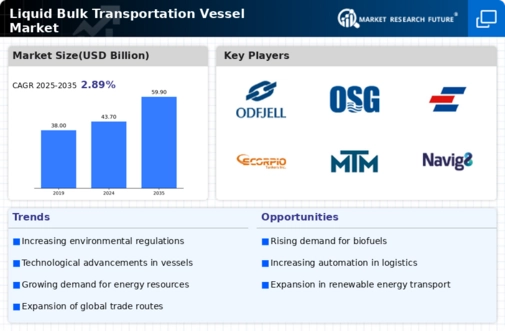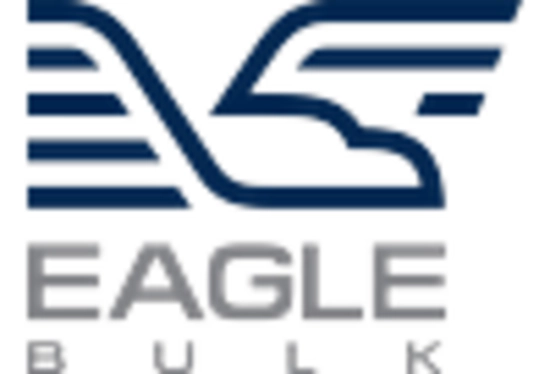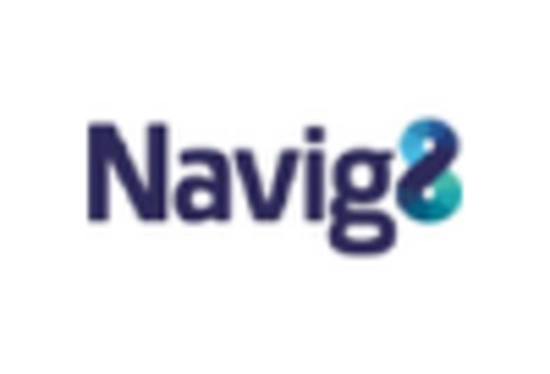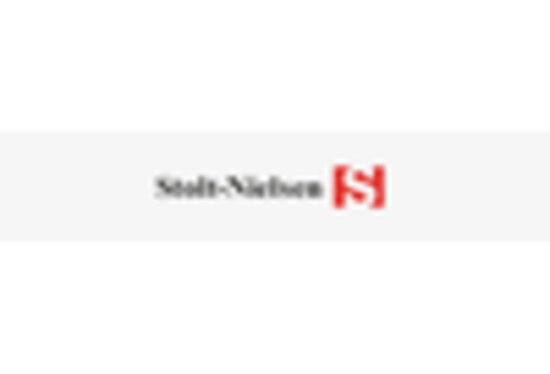Increasing Demand for Oil and Gas
The Liquid Bulk Transportation Vessel Market is experiencing a surge in demand driven by the growing consumption of oil and gas. As economies expand, the need for energy resources escalates, leading to increased shipments of crude oil and refined products. In 2025, the International Energy Agency projects that global oil demand will reach approximately 104 million barrels per day, necessitating a robust fleet of liquid bulk vessels to facilitate transportation. This trend is further supported by the rise in petrochemical production, which relies heavily on liquid bulk transport. Consequently, the industry is likely to see investments in newer, more efficient vessels to meet this demand, thereby enhancing operational capabilities and reducing transportation costs.
Expansion of Chemical Manufacturing
The Liquid Bulk Transportation Vessel Market is significantly influenced by the expansion of the chemical manufacturing sector. As industries such as agriculture, pharmaceuticals, and consumer goods grow, the demand for various chemicals, including fertilizers and specialty chemicals, increases. In 2025, the global chemical production is expected to rise by approximately 3.5%, leading to a corresponding increase in the transportation of liquid bulk chemicals. This growth necessitates a reliable and efficient fleet of vessels capable of transporting hazardous and non-hazardous liquids. The industry is likely to adapt by developing specialized vessels that comply with stringent safety regulations, thereby ensuring the safe transport of these essential materials.
Growth in Trade and Global Supply Chains
The Liquid Bulk Transportation Vessel Market is significantly impacted by the growth in international trade and the expansion of global supply chains. As countries engage in more trade agreements and economic partnerships, the movement of liquid bulk commodities, such as oil, chemicals, and liquefied gases, is expected to increase. In 2025, the World Trade Organization anticipates a rise in trade volumes, which will likely necessitate a more extensive fleet of liquid bulk vessels to accommodate this demand. This trend may lead to increased competition among shipping companies, prompting them to enhance their service offerings and invest in larger, more efficient vessels. Consequently, the industry is poised for growth as it adapts to the evolving dynamics of global trade.
Regulatory Compliance and Safety Standards
The Liquid Bulk Transportation Vessel Market is heavily influenced by the evolving regulatory landscape concerning safety and environmental standards. Governments and international bodies are increasingly implementing stringent regulations to minimize the environmental impact of shipping operations. In 2025, compliance with the International Maritime Organization's (IMO) regulations will be paramount, as these guidelines aim to reduce greenhouse gas emissions from ships. This regulatory pressure is likely to drive investments in advanced technologies and vessel designs that enhance safety and environmental performance. As a result, companies within the industry may prioritize the retrofitting of existing vessels and the construction of new, compliant vessels to maintain competitiveness and adhere to legal requirements.
Technological Innovations in Vessel Design
The Liquid Bulk Transportation Vessel Market is witnessing a wave of technological innovations that enhance vessel design and operational efficiency. Advancements in materials science, automation, and digital technologies are leading to the development of smarter, more efficient vessels. In 2025, the integration of IoT and AI technologies is expected to optimize route planning and fuel consumption, potentially reducing operational costs by up to 15%. Furthermore, innovations such as double-hulled designs and advanced cargo handling systems are improving safety and reducing the risk of spills. These technological advancements not only enhance the performance of liquid bulk vessels but also align with the industry's shift towards sustainability and efficiency.


















Leave a Comment